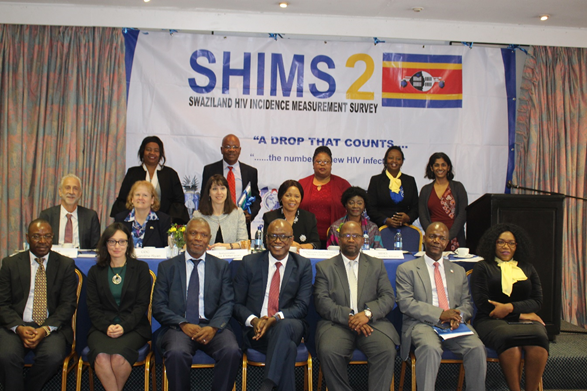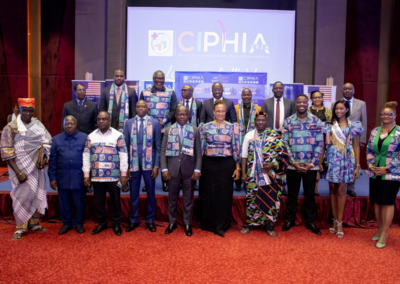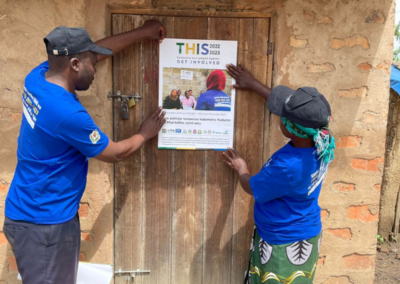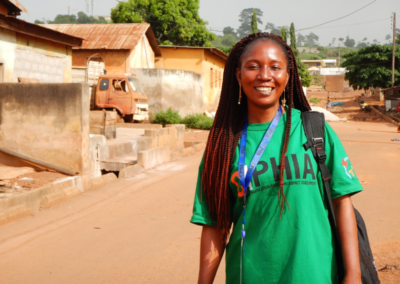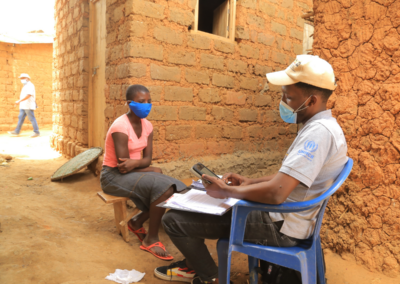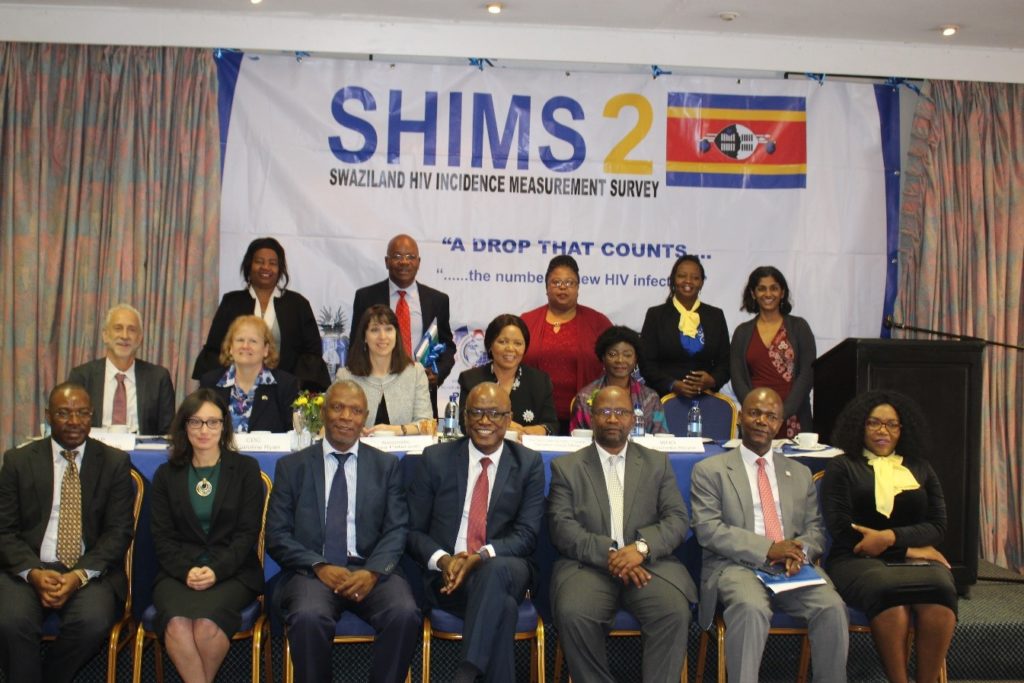
Leadership from the Ministry of Health – Eswatini, ICAP at Columbia University, NERCHA and SHIMS2 investigators with officiating dignitaries of the SHIMS2 Final Report Commissioning
The Government of the Kingdom of Eswatini (GKoE) remains the country with the highest HIV prevalence in the world, with nearly 1 in 3 adults (15 years and older) living with HIV. Over the last decade, the expansion of HIV testing and increase in the number of individuals living with HIV on antiretroviral treatment has demonstrated substantial progress in the nation’s HIV response.
Providing the latest update on the status of the epidemic, the final report and results of the second Swaziland (Eswatini) HIV Incidence Measurement Survey (SHIMS2) were commissioned by the government and disseminated on May 9, 2019, at a meeting in Ezulwini, Eswatini. The meeting was officiated by high-level officials from the GKOE and the United States Government agencies.
The meeting also marked the launch of a new survey, SHIMS3 2020, scheduled for completion by World AIDS Day 2020.
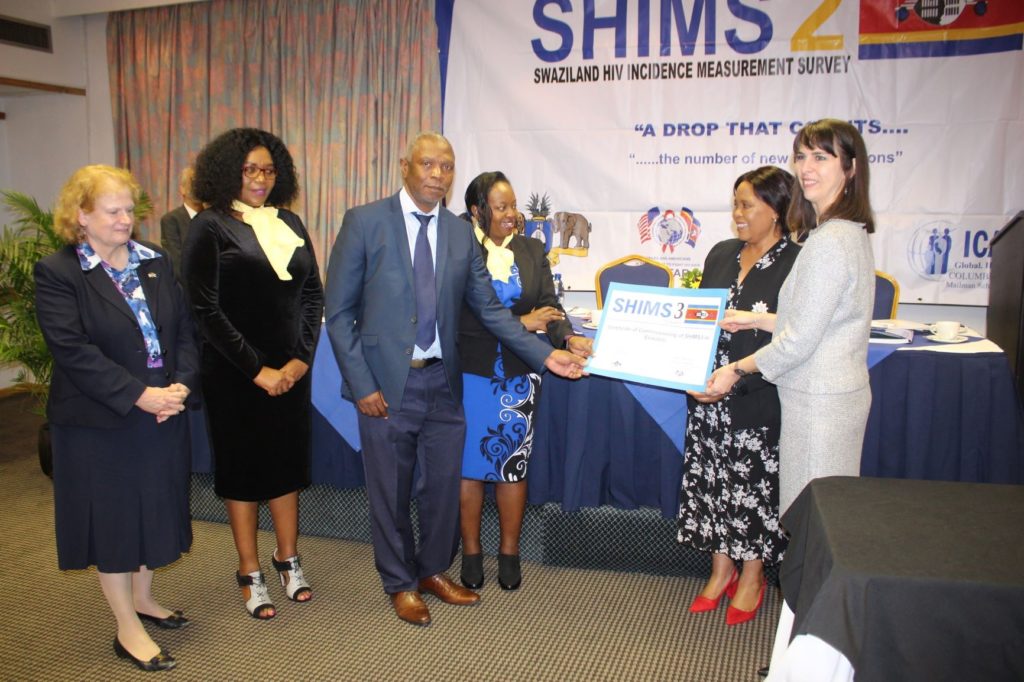
The United States Ambassador to Eswatini, Lisa Peterson (R), the Minister of Health Eswatini, Lizzy Nkosi (second to R), and Director of Central Statistical Office Eswatini, Amos Zwane (M) commission the start of the new SHIMS survey
SHIMS2 was a population-based HIV impact assessment (PHIA) survey led by the GKoE’s Ministry of Health, in close collaboration with the Central Statistics Office, ICAP at Columbia University, and the U.S. Centers for Disease Control and Prevention (CDC), with funding from the President’s Emergency Plan for AIDS Relief (PEPFAR). In 2011, Eswatini’s first nationally representative HIV incidence survey, SHIMS1, was also carried out through this partnership.
Findings from SHIMS1 and SHIMS2 show that between 2011 to 2016, HIV incidence decreased by 44% and the prevalence of viral load suppression more than doubled. These advancements demonstrate that national HIV programs and treatment as prevention can reduce new HIV infections even in countries highly impacted by HIV, such as Eswatini. Speaking at the meeting, Ms. Lisa Peterson, the United States Ambassador to Eswatini, lauded the successful implementation of SHIMS2, including progress towards 90-90-90 targets and dedicated work of the GKoE’s treatment programs. “Through the findings of SHIMS1 and SHIMS2, Eswatini has provided evidence that epidemic control of HIV is possible,” she noted.
SHIMS2 also found that, in 2016, 27.0% of adults (15 years and older) in Eswatini were living with HIV and 87% of them knew their status. Of those who knew their status, most (88.8%) were on antiretroviral therapy (ART), and among those on ART, most were virally suppressed (91.4%). These results demonstrate that Eswatini has nearly completed the 90-90-90 targets, with the potential to reach 95-95-95 by 2020.
The GKoE’s Minister of Health, the Honorable Senator Lizzie Nkosi, emphasized that “the SHIMS2 final report can be used to support the adoption of HIV mitigation strategies that may allow for the epidemic control of HIV in Eswatini.”
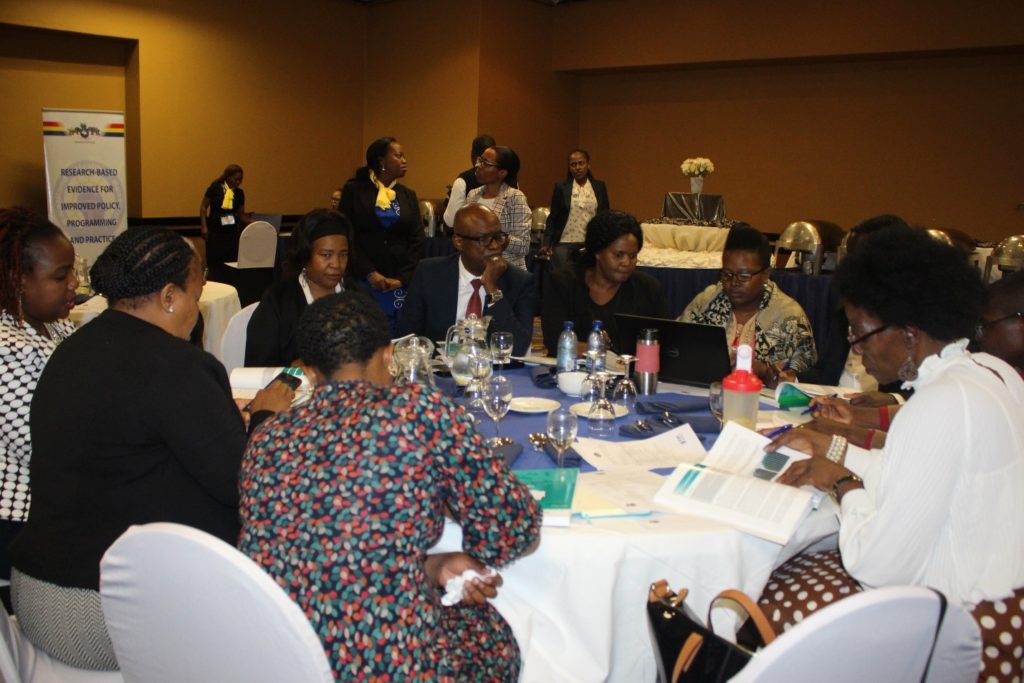
Group discussion at the SHIMS2 tehnical meeting on the implications and policy direction of the final report results
After the commissioning of the SHIMS2 final report and launch of SHIMS3 2020, a technical meeting was held to discuss and translate the report findings to address gaps and inform health policies. The technical meeting was well-attended by clinicians, programmers, and civil society representatives, including people living with HIV, from across the country. Through group discussions, participants developed recommendations on how to apply SHIMS2 findings to existing national policies and programs on HIV prevention, testing, care and treatment.
ICAP’s David Hoos, MD, the PHIA project director, applauded the success of the HIV response in Eswatini and the government’s commitment to end the epidemic. “SHIMS2 showed the impressive progress achieved in the Kingdom with a significant decrease in HIV incidence, which occurred concurrently with a dramatic rise in HIV treatment coverage with impressive increase in HIV viral load suppression. This is the largest population-level validation of ‘treatment as prevention’ and the epidemiologic potential of the 90-90-90 targets,” he said.
For additional information and access to the final report, visit: phia.icap.columbia.edu/countries/Eswatini
SHIMS2 was a population-based HIV impact assessment (PHIA) survey led by the GKoE’s Ministry of Health, in close collaboration with the Central Statistics Office, ICAP at Columbia University, and the U.S. Centers for Disease Control and Prevention (CDC), with funding from the President’s Emergency Plan for AIDS Relief (PEPFAR). SHIMS2 provides an unprecedented understanding of the reach and impact of Eswatini’s HIV programs using nationally-representative, household-based surveys. This partnership also conducted the first SHIMS in 2011 to measure HIV incidence among adults 18-49 years.






